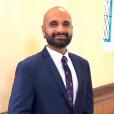Neutron beam time allocations announced
Second half of 2018

Showing 1041 - 1060 of 1633 results
Second half of 2018
Scientific merit of applications for beamtime assessed.

ANSTO’s own meteorite hunter, who is also a planetary scientist and instrument scientist Dr Helen Brand took part in an expedition led by Professor Andy Tomkins of Monash University that has found the largest meteorite strewn field in Australia since the famous Murchison meteorite event in 1969.
ANSTO has recently concluded up a successful cross-cultural nuclear science education project between Australia and Japan.



Research to assess the impact of recent landscape change by measuring fundamental geomorphic processes that are the result of long-term landscape evolution.
Building a stable tower out of paper and designing a bionic limb were among the challenges of the Discover Engineering day, held on 11 May at ANSTO.
Nanostructure engineered low activation superconductors for fusion energy research.
Micro radiation therapy being developed by UOW in association with the Australian Synchrotron.
MABI instrument can determine both the concentration and source of black carbon pollution in the atmosphere.
Sri Lankan students took part in an innovative hackathon to develop novel solutions to a wastewater runoff problem from reverse osmosis water treatment plants.
Professor of Soil Science at The University of Queensland, Peter Kopittke and partner investigator Prof Enzo Lombi of the University of SA are very optimistic about the use of a new synchrotron-based imaging technique that captures in 3D the complex interaction of soil and root.
Accelerator technique used in pioneering biomaterials research led by the University of Sydney.
Research confirms heating can increase strength of a type of hydrogel.
ANSTO has contributed to research that indicated that Aboriginal people had a broad diet and intensive plant processing technologies, allowing them to respond to changes in climate, sea level and vegetation over the last ca. 65,000 years.